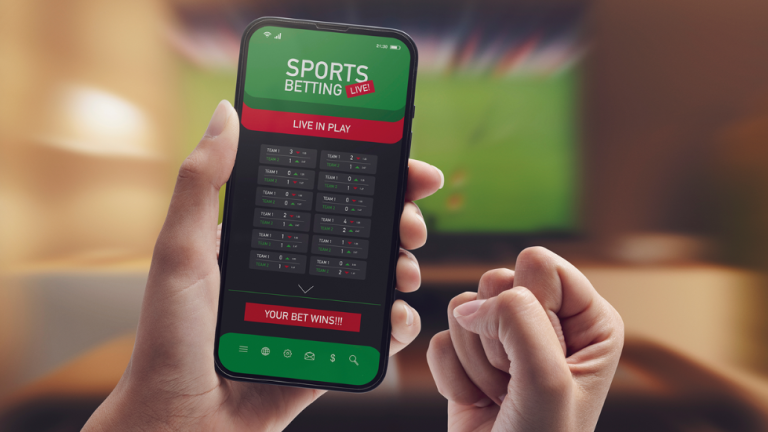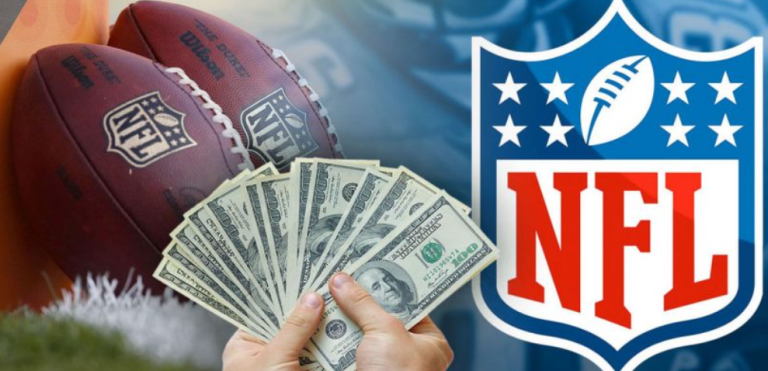Using advanced metrics in basketball betting
NBA wagering has progressed beyond instinct and basic stats. Today’s successful bettors leverage basketball metrics to make informed decisions and identify profitable opportunities that casual bettors miss.
Why analytics and advanced metrics are important for basketball betting in the US ⚡

The US sports wagering market has expanded exponentially since 2018. With increased competition, gaining every possible edge became crucial. Traditional statistics like points per game only scratch the surface of what determines game outcomes.
Basketball advanced metrics provide deeper insights by accounting for pace, efficiency, and context that basic stats ignore. These measurements help identify situations where oddsmakers may have mispriced a line. Professional bettors have used advanced basketball betting metrics for years, and now recreational bettors access the same tools.
How proper analysis helps increase your chances of winning 📈
Leveraging NBA analytics for betting transforms wagering from guesswork into data-driven decisions. When you interpret basketball player performance metrics correctly, you identify mismatches oddsmakers undervalue.
The analytics-based method consistently outperforms traditional approaches by removing emotional bias. Research shows bettors incorporating advanced analytics win at rates 8-12% higher than those relying on conventional wisdom.
Top advanced metrics every basketball bettor should know 📊
Grasping key statistics distinguishes sharp players from those relying on educated guesses. While dozens of statistics exist, specific data points deliver the most actionable insights for handicapping. Each statistic uncovers distinct performance elements that shape outcomes and profit potential.
The most impactful advanced basketball metrics focus on efficiency rather than volume. A player scoring 30 points sounds impressive, but if they required 35 shots to reach that total, their actual offensive contribution diminishes significantly. This is where player efficiency rating PER and similar measurements become invaluable.
Player efficiency rating (PER) 🏀
Player efficiency rating PER summarizes a player’s per-minute statistical accomplishments into a single number. Created by NBA analyst John Hollinger, PER adjusts for pace and weighs each statistical category by its actual value. The league average PER sits at 15.0, with elite players typically posting numbers above 25.0.
- ✅ 25.0+ = MVP-caliber performance
- ✅ 20.0-25.0 = All-Star level
- ✅ 15.0-20.0 = Above average starter
- ❌ 10.0-15.0 = Below average rotation player
- ❌ Under 10.0 = Replacement level
For player props or team totals, examining PER reveals which players genuinely impact winning. A team missing a player with a 23.0 PER faces a much steeper challenge than one missing someone at 12.0 PER, even if both are starters. This context helps you evaluate injury reports more accurately.
True shooting percentage measures shooting efficiency while accounting for free throws and three-pointers. The formula is: Points / (2 × (Field Goal Attempts + 0.44 × Free Throw Attempts)). This metric reveals true offensive efficiency better than standard field goal percentage. Elite scorers typically post TS% above 60%, while league average hovers around 56-57%.
Offensive and defensive rating calculate points scored or allowed per 100 possessions. These pace-adjusted statistics allow accurate comparisons between squads operating at different speeds. A team scoring 115 points per game at a fast pace might actually be less efficient than one scoring 105 at a slower tempo.
Usage rate indicates the percentage of team possessions a player uses while on the floor. High-usage players (above 28%) dominate the ball, making their availability crucial for handicapping. Usage rate basketball analysis helps predict how scoring distribution changes when key players miss games.
How game conditions affect betting outcomes 🌦️
Context matters enormously in hoops wagering. The same team can perform dramatically differently depending on various situational factors. Grasping how conditions interact with statistical data creates significant handicapping edges.
Schedule factors captured in advanced basketball metrics impact performance more than most bettors realize. Teams playing their fourth game in five nights typically see efficiency drops of 4-7% compared to their season averages. Back-to-back situations, particularly when involving travel, create fatigue that shows up clearly in efficiency statistics.
Home vs away game performance 🏟️
Home court advantage in the NBA typically adds 2.5-3.5 points to a team’s expected performance. However, this varies significantly by team and situation. Some franchises show home/away splits exceeding 6 points per 100 possessions, while others demonstrate minimal difference.
- ✅ Compare offensive and defensive ratings separately
- ✅ Look for consistency over multiple seasons
- ✅ Consider altitude factors (Denver, Utah)
- ✅ Evaluate crowd impact on free throw shooting
- ✅ Account for time zone travel (especially East to West)
- ❌ Don’t assume all home courts provide equal advantage
- ❌ Avoid ignoring recent form and injuries
- ❌ Don’t overlook back-to-back scheduling impacts
NCAA play demonstrates even more dramatic home/away disparities than the NBA. NCAA basketball stats reveal that home teams win approximately 68% of games, compared to about 58% in the NBA. This difference stems from less travel-experienced rosters, smaller venues with more intense crowds, and varying facility quality.
The 2019-2020 NBA bubble environment provided fascinating data about home court advantage. Without crowds, the typical home/away splits nearly disappeared, suggesting that referee bias and crowd noise significantly influence outcomes. Smart bettors now adjust home court advantages downward during playoffs when crowds become more neutral.
Rest advantage scenarios:
Using metrics to identify value bets 🎯
Spotting value opportunities represents the pinnacle of handicapping – locating scenarios where calculated probabilities exceed implied odds. Statistical models deliver the framework to project precise probabilities and identify these opportunities. Success involves contrasting data-driven projections with posted odds.
Professional bettors build statistical models using basketball metrics to generate their own point spreads and totals. When their numbers differ significantly from sportsbook lines, they’ve identified potential value. Even without complex models, recreational bettors can apply this principle by using publicly available advanced statistics.
Comparing odds with advanced metrics 📊
Begin by converting posted odds into implied probabilities. For example, -110 odds (the standard line) imply a 52.4% chance of winning when you account for the bookmaker’s juice. If your analysis using basketball betting data suggests a 58% probability, you’ve found a value bet worth approximately 5.6%.
- Calculate team efficiency differentials – Subtract opponent’s defensive rating from your team’s offensive rating
- Adjust for pace – Multiply the differential by expected possessions
- Apply situational factors – Add/subtract points for rest, travel, home court
- Generate your projected spread – Compare this to the posted line
- Convert to probabilities – Determine if sufficient value exists
Example calculation:
Team A: 115.2 Offensive Rating, 108.4 Defensive Rating Team B: 110.8 Offensive Rating, 112.6 Defensive Rating Expected Pace: 100 possessions Home Court: +3.5 points to Team A
Projected scoring:
- Team A: (115.2 – 112.6) × (100/100) + 3.5 = 6.1 points
- If the line is Team A -4.5, you’ve found 1.6 points of value
Look for value bets of at least 2-3% probability advantage. Smaller edges might not overcome variance and bookmaker advantages over small sample sizes.
Combining metrics for smarter betting strategies 🧠
The real power of basketball player performance metrics emerges when you combine multiple measurements to create comprehensive analyses. No single statistic tells the complete story, but combining multiple indicators uncovers patterns that isolated numbers miss. This holistic approach mirrors how professional analytics departments evaluate teams and matchups.
Think of statistics as puzzle pieces. Offensive rating displays scoring efficiency, pace dictates possessions, and usage rate reveals shot distribution. Together, they paint a complete picture of how teams generate points and whether their approach creates advantages against specific opponents.
Offense vs defense matchup analysis 🏀
The most profitable betting situations often emerge from offense vs defense matchup analysis. When an elite offensive team faces a weak defense, or vice versa, totals and spreads frequently offer value. Success involves measuring these matchups through multiple efficiency indicators rather than gut feelings.
Creating an advanced matchup matrix:
Consider a scenario where Team A ranks 2nd in true shooting percentage TS% at 59.2% and Team B ranks 28th in opponent TS% allowed at 58.1%. This represents a significant mismatch favoring Team A’s offense. If Team A also excels in three-point shooting while Team B struggles defending the perimeter, the matchup advantage compounds.
- ❌ High pace team on second night of back-to-back
- ❌ Elite defense vs struggling offense with injured key scorer
- ❌ Road team in high altitude arena without acclimatization
- ❌ Teams with drastically different pace preferences
- ✅ Elite offensive team vs bottom-10 defense with rest advantage
- ✅ Strong defensive team catching high-turnover opponent
- ✅ Fast-paced matchup between two up-tempo teams
- ✅ Mismatched PER ratings with player prop opportunities
Metrics to review before placing a bet 📋
- Offensive efficiency differential – Does one team hold significant ORtg advantage?
- Defensive rating comparison – Which defense shows better defensive rating NBA metrics?
- Pace projection – Will the game be played fast or slow?
- Key player PER and usage – Are star players available and healthy?
- True shooting percentages – Which team shoots more efficiently?
- Rest and travel factors – Does either team face scheduling disadvantages?
- Home/away splits – How do teams perform in current venue context?
- Recent form in efficiency – Are teams trending up or down?
Common mistakes when using advanced basketball metrics ⚠️
Even experienced bettors fall into analytical traps when applying basketball metrics incorrectly. The most dangerous mistakes happen when players overvalue specific numbers or misread what data points actually reveal.
Frequent analytical errors:
- ❌ Over-relying on single metrics – No individual statistic tells the complete story
- ❌ Ignoring sample size – Small datasets produce misleading conclusions
- ❌ Forgetting context – Statistics from games against weak opponents inflate numbers
- ❌ Neglecting injuries – Missing key players invalidate season-long averages
- ❌ Chasing narrative over numbers – Media storylines often contradict actual data
- ❌ Misunderstanding efficiency – Confusing total production with per-possession efficiency
Tools and apps to track advanced basketball stats 🛠️
Today’s handicappers access numerous platforms providing comprehensive hoops statistical data and analysis. These tools range from free websites to premium subscription services offering proprietary models and real-time updates. Selecting optimal tools hinges on your wagering frequency, budget, and analytical depth.
- 🎰 Basketball-Reference.com – Comprehensive database with extensive advanced statistics
- 🎰 NBA.com/stats – Official league statistics with advanced filtering options
- 🎰 Cleaning the Glass – Free tier offers excellent team-level analytics
- 🎰 Dunks and Threes – Injury impact analysis and lineup data
- 🎰 Synergy Sports – Video-based analytics with play-type breakdowns
- 🎰 Second Spectrum – Tracking data and spatial analytics
- 🎰 Haralabob’s spreadsheets (when available) – Historical perspective from legendary NBA bettor
- 🎰 Action Network – Handicapping-focused analytics and line movement tracking
For college hoops data, Ken Pomeroy’s website (KenPom.com) represents the gold standard. His adjusted efficiency margins and tempo-free statistics deliver the most reliable NCAA analysis available. The annual subscription costs around $20 and delivers rapid ROI through sharper college handicapping.
Mobile apps like “Stats.com” and “TeamRankings” provide on-the-go access to advanced basketball metrics, allowing you to check critical numbers while at sportsbooks or monitoring live betting opportunities. Push notifications for lineup changes and injury updates help you react quickly to market-moving information.
Real-life examples of metrics-driven betting wins 🏆
These real examples demonstrate how basketball advanced metrics translate into profitable betting decisions.
- NBA playoff underdog win (2023):
Miami Heat entered 2023 playoffs as significant underdogs despite posting elite defensive rating NBA numbers (102.4). Handicappers examining postseason statistics discovered ongoing value playing Miami spreads, producing consistent profits throughout the series.
- Total over opportunity (2024):
A January 2024 matchup between Indiana Pacers and Washington Wizards showed a total of 235.5. Both teams ranked top-5 in pace and bottom-10 in defensive rating NBA. Final score: 138-133 (271 total points), crushing the over by 35.5 points.
College basketball analytics wins 🎓
College hoops data frequently offers sharper edges than NBA statistics since NCAA wagering markets remain less efficient. Fewer sharp players target NCAA games, opening windows for analytical handicappers to discover profitable spots.
- Mid-major tournament success (2024 March Madness):
The 2024 NCAA Tournament saw multiple mid-major programs advance beyond expectations, with bettors using KenPom efficiency ratings finding significant value. Schools like Oakland University entered with adjusted defensive efficiency ratings superior to their higher-seeded opponents, yet oddsmakers relied heavily on conference reputation. Bettors who trusted tempo-free statistics over traditional power conference bias profited handsomely.
Comparing successful vs unsuccessful metric application:
Lessons for novice and experienced bettors 📈
Systematic analysis beats intuition over large sample sizes. Only disciplined analytical approaches produce long-term profits.
- Start with 3-5 core metrics
- Track your bets and analyze wins vs losses
- Accept that variance exists
- Bet smaller amounts while building skills
- Continuously update models with new data
- Avoid over-confidence in any single approach
- Test new metrics against historical data
- Stay humble and adapt
A recreational bettor increased win rate from 48% to 56% over one season by implementing simple analytics focusing on rest advantages, pace matchups, and offense vs defense matchup analysis.
Make metrics your advantage ⚡
Statistical model evolution has democratized information previously exclusive to professionals. Today’s tools allow anyone willing to invest time in learning basketball metrics to compete at higher levels.
Profitable statistical handicapping demands understanding key numbers, reliable data access, and discipline to trust your projections. Begin by mastering core efficiency statistics, then gradually broaden your analytical arsenal.
Build your analytical process incrementally. Track your bets, note which factors influenced correct predictions, and refine your approach continuously. Your edge lies in asking better questions, considering more relevant context, and trusting mathematical probabilities over media narratives.
FAQ
What are the most important advanced metrics for NBA betting?
Prioritize offensive/defensive rating, true shooting percentage, pace, and player efficiency rating.
How do injuries and lineup changes impact betting outcomes?
High-usage players typically shift spreads by 4-7 points when absent.
Which websites provide reliable NCAA basketball analytics?
KenPom.com leads for college analytics, while BartTorvik.com adds valuable complementary data.
Can metrics like PER and TS% help identify value bets?
Yes, efficiency mismatches between elite shooters and weak defenses create exploitable opportunities.
How should I combine multiple metrics for smarter betting strategies?
Layer efficiency ratings, shooting percentages, pace, and situational factors across multiple categories.









